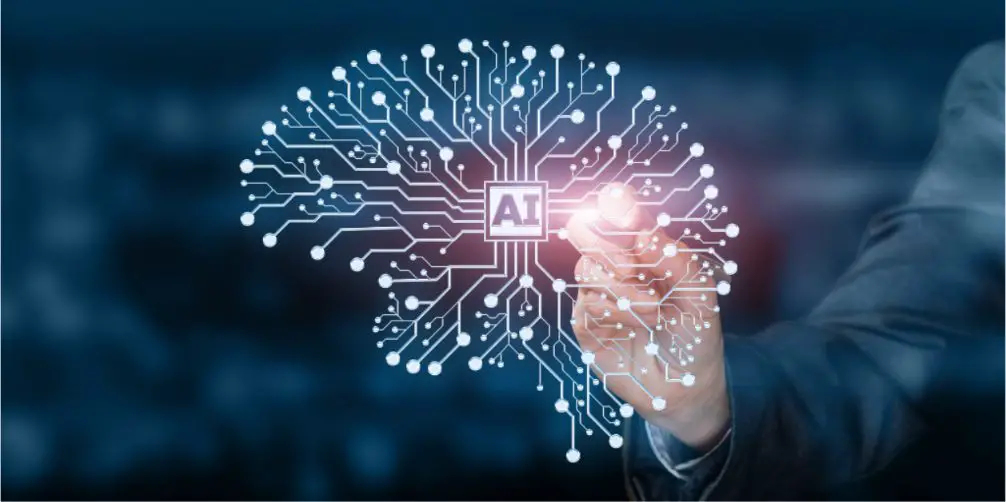
What Is AI Penetration Testing and Its Importance?
Recently, artificial intelligence (AI) brought to the modern world considerable changes in the way of running a business. It acquired a weighty role in decision-making and monitoring the overall business activities.
However, there remains a tangible drawback – whether the software is trustable enough. It is well-known that digital information is vulnerable to cyber-attacks. For example, the banking industry is a big target to cyber threats as it handles sensitive financial and personal information of its users and employees. AI shields the banking sector from cyber threats.
That’s why organizations are obliged to learn to defend their systems and be one step ahead of hackers. Previously, it was the responsibility of pen testers only to perform the process manually. But today, with the introduction of AI technologies, penetration testing has become upgraded and automated.
AI penetration testing (pentesting) implies delivering attack simulations to assure that organizations have appropriate countermeasures and responses to detect and prevent cyber-attacks.
Manual Pentesting VS AI Pentesting
With vast volumes of data and an agile AI environment, manual penetration testing can’t keep up with all new applications and becomes impossible. More and more companies implement solutions to provide AI security. The statistics show that 75% of enterprises were relying on AI-based platforms for network security in 2019, the numbers rising since then.
Thus, it’s no surprise that AI pentesting holds some advantages over a manual one. One of the most common and significant benefits show that AI algorithms:
- reduce the overall time for the process. It takes only some instances to check all the algorithms in the entire system;
- are cost-effective thanks to saving money on human resources. Pen testers no longer have to perform tedious operations of manual pentesting and can switch to more demanding tasks;
- are possible to perform several times and with a greater volume of data;
- predict different scenarios to facilitate the decision-making process;
- perform continuous monitoring and real-time reports to warn about any problem that may occur;
- are easily updatable, which is necessary due to newly emerging algorithms and intrusion models.
How Is AI Implemented In Penetration Testing?
To determine how AI and machine learning help respond to cyber-attacks, we will consider the main phases of pentesting on which companies can implement AI technologies:
1. Reconnaissance
The first stage consists in gathering all the information about potential targets: software components, employees’ personal data, passwords, and more.
Implementing AI security from InData Labs will allow for collecting vast data automatically, getting accurate results, and saving time. Besides, AI technologies can also determine various action strategies.
2. Scanning
Depending on the information obtained, the pen testers use relevant tools to identify vulnerabilities in the systems. The use of AI in pentesting makes it possible to find new ways to penetrate the target and exploit information simultaneously.
3. Gaining Access
At this stage, pen testers try to gain access to the networks in any possible way. They use numerous tools to gain access and check vulnerabilities.
AI-based algorithms can try out a huge number of passwords to see the system’s susceptibility for cyber-attacks. In addition, the algorithms can be trained to monitor data changes and adapt their penetration techniques to new patterns.
4. Reporting
The last stage consists of analyzing the means, tools, and techniques used and all the identified vulnerabilities. Leveraging AI can boost this phase and offer effective steps in determining threats and considering historical data by machine learning algorithms.
Armed with the information about its networks’ weaknesses and loopholes, the company can already fix them and be able to resist cyber-attacks. And if the company uses AI-based pentesting, it can keep an eye on the latest trends, system vulnerabilities, and hackers’ techniques for possible attacks.

What to Consider Before Pentesting?
Each matter requires certain words of advice so that it could perform with the best results. Pay attention to the following points that can affect your penetration testing results:
- Determine your goals and correlate tools with your goals and targets;
- Establish a pentesting schedule and perform it with a regular frequency to guarantee a more consistent network;
- Keep records of all previous penetration tests. They may help analyze current problems.
- Remain alert and be ready for continuous adjustments to the modern trends to be able to find appropriate countermeasures.
The Future of AI Pentesting
The development of AI penetration testing will continue to grow dramatically as it helps businesses optimize security costs and bolster human expertise with machine efficiency. Combining speed and accuracy, AI algorithms facilitate the decision-making process for pentesting specialists and contribute to better results with optimal costs.